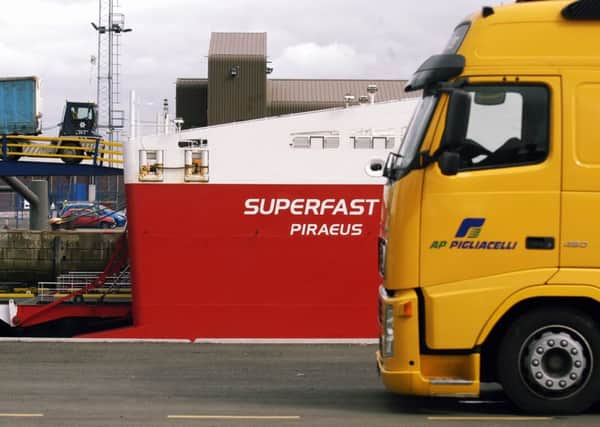David Spaven: Unlocking potential of freight is crucial


Together with continuing progress towards the long-awaited rail connection at Highland Spring’s Blackford plant, these are encouraging signs that new traffics are helping to fill the gap in the rail freight business left by the demise of coal.
But much more needs to be done to meet the challenge posed by the Scottish Government’s High Level Output Specification [HLOS] which requires Network Rail to “clearly demonstrate throughout Control Period 6 [2019-2024] that it is using all levers at its disposal to make the use of rail freight attractive to business across Scotland, including simplicity of processes and a flexible approach to accommodating new rail freight traffic”.
Advertisement
Hide AdAdvertisement
Hide AdThe new HLOS includes growth targets for Scottish rail freight, and Network Rail is specifically charged with improving ‘loading gauge clearance’, the technical term for raising bridge and tunnel heights to enable the modern generation of tall and wide containers to pass seamlessly.


Rail has been handicapped in this crucial capability by the widespread ease with which road hauliers can send the biggest-dimension containers anywhere on the upgraded trunk road network – yet the Scottish rail network remains a patchwork of different clearances involving complex permutations of wagon and container types.
Government itself has a central role to play in delivering the much-needed expansion of rail freight, particularly in terms of infrastructure, where the road haulage industry has long benefited from high levels of funding for new roads such as the A9 upgrading, M8 completion and the M74 northern extension. So, what are the key enhancements required to create a competitive level playing field between road haulage and rail freight?
The modernisation of strategic Anglo-Scottish route corridors is fundamental to unlocking the potential for rail freight to better serve domestic and export markets.
Amongst the core upgrades needed are lengthened overtaking loops on the East Coast Main Line (ECML) and the West Coast Main Line (WCML) to accommodate 775-metre freight trains, the maximum which can pass through the Channel Tunnel (and the equivalent of more than 40 lorry loads in a single movement).
We also need to match the recent enhancement of loading gauge along the ECML, with equivalent improvements on the core rail freight spine from Grangemouth through Coatbridge and Mossend, then over the WCML to Carlisle and southern markets.
But rail freight cannot prosper simply by concentrating on the Anglo-Scottish lines. Upgrading key feeder rail routes within Scotland is crucial to the strategy.
Some obvious targets are the long-overdue enhancement of the largely single-track Highland Main Line from Perth to Inverness, with longer crossing loops and more double track, allowing rail freight to increase the capacity of each train by up to 40 per cent, and lengthened overtaking loops on the route linking rail hubs at Mossend, Coatbridge and Grangemouth with Aberdeen – allowing longer and more cost-effective trains.
Advertisement
Hide AdAdvertisement
Hide AdLoading gauge enhancements on the routes to Inverness and Aberdeen would allow conveyance of wider refrigerated containers for chilled and frozen food and a ‘cross-modal’ approach to the Glasgow-Fort William corridor, with infrastructure investment, would enable the West Highland Line – rather than just the A82 – to play a full part in the massive planned expansion of output at the Fort William aluminium smelter.
Route capacity and capability enhancements would allow the return of regular rail freight to the Far North Line from Inverness to Caithness while improved rail routes are essential – but realising their potential depends in part on the creation of new or enhanced rail freight terminals to serve neglected regions.
Amongst the priorities should be Dundee, one of the largest cities in Britain with no rail freight facilities (indeed there are none in the whole of Tayside), Speyside – terminals at Keith and/or Elgin are needed to allow rail freight to serve the market for whisky transport and the wider food anddrink sector – and direct rail access to key whisky industry sites, such as Cameron Bridge in Fife (the largest grain distillery in Europe) and Cambus/Blackgrange near Alloa (the largest bonded warehouse site in Europe), and Bathgate – serving one of Scotland’s major concentrations of regional distribution centres.
Serious progress on this kind of programme will ensure that rail freight realises its full potential as a safe and sustainable mode of transport, helping to meet core economic and environmental policy objectives.
David Spaven, Scottish representative, Rail Freight Group.